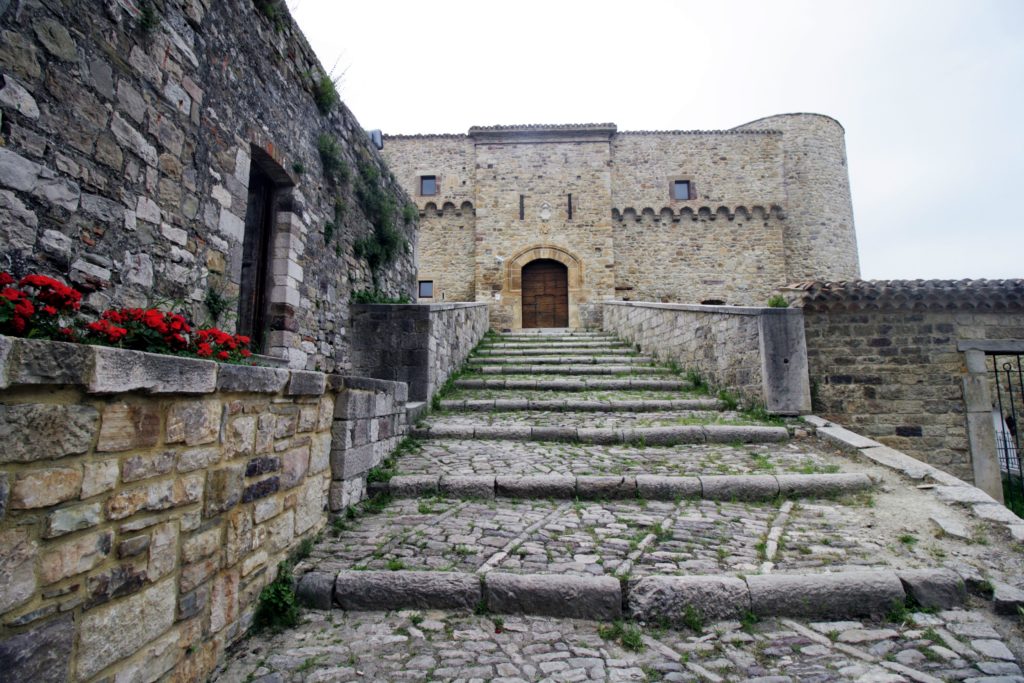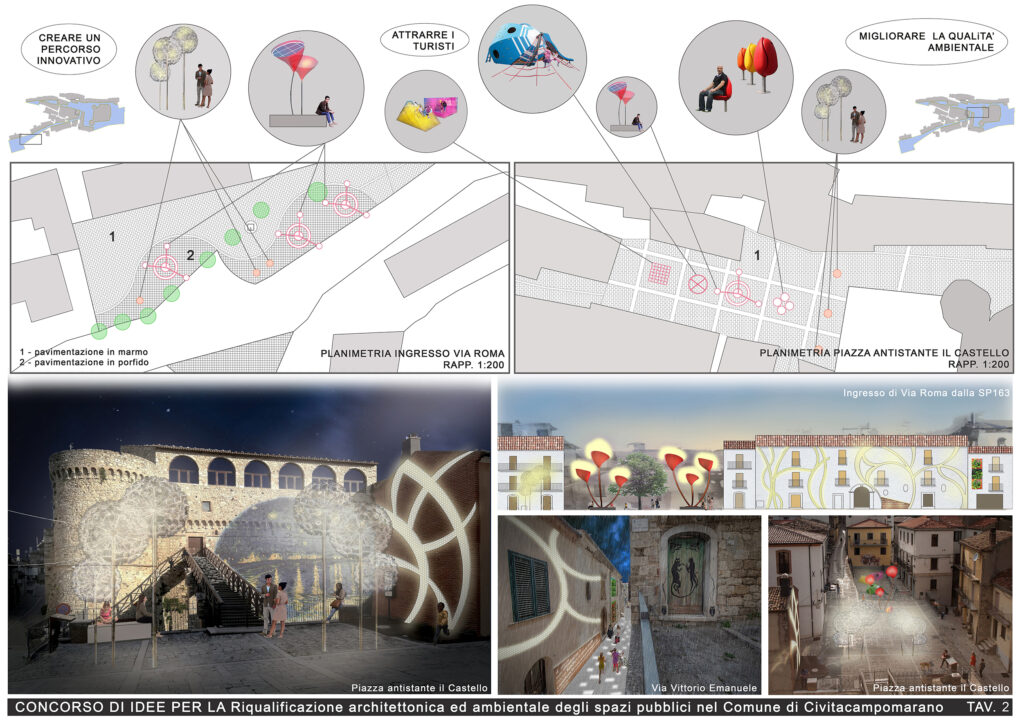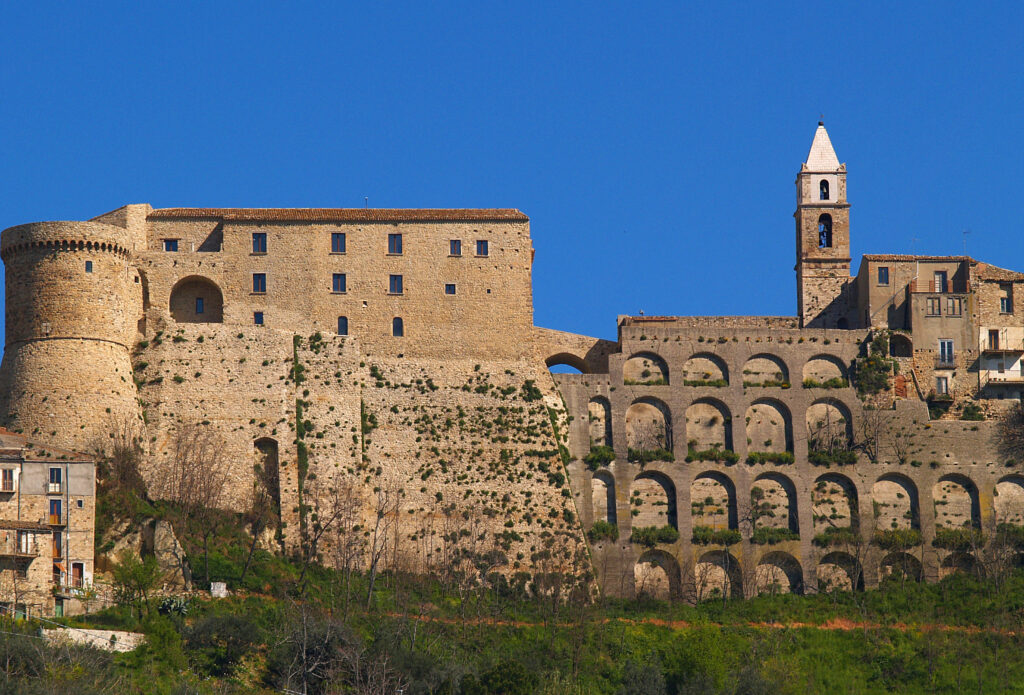Civitacampomarano is a small center where history, culture,
and unspoiled nature represent immense value. It sits 520
meters above sea level along an imposing tufa person in the
center of the Great Walloon. Of uncertain origin, the first
claim in the form of Campomarano dates back to 999 A.C. Civitacampomarano is an Authentic Village engaged in a
quality path that stands out as a place rich in tradition and culture, but at the same time, opens the gaze towards a
broader horizon is the search for innovation and, above all,
towards sustainable development. The real challenge is,
therefore, to reconcile the preservation of identity with
growth and socio-economic change. The emblematic
testimony of Civitese history is the Angioino Castle, a
valuable monument of great historical value consisting of
majestic cylindrical towers, whose square in front represents
the center of the village where the main streets converge, Via
Rome and Via Vittorio Emanuele.
The design idea
The project aims to enhance the link between
Civitacampomarano and art, enhancing the artistic language
of street art in the path undertaken since 2014 with the “Cvtà
street art,” whose goal of making art alive and coloring with
it the walls and spaces shared, it marries with the idea behind
the work done, aimed at achieving a winning strategy, able to
counter the abandonment and degradation of the village. The
aim of the project is the realization of UNICUM eliminating
the apparent fragmentation between the area of Castello
Angioino with Via Vittorio Emanuele and Via Roma to
achieve the following objectives: • Improve the environmental quality of areas and routes,
characterizing them with natural and artistic elements to
give a strong identity, both during daylight hours and in
the evening hours; • Create an innovative path in which the light sculptures,
in addition to characterizing the architecture of the
tracks, will ensure environmental sustainability since
integrated by photovoltaic cells;
• Attract tourists and inhabitants of the surrounding areas
to promote the small reality’s social, cultural,
environmental, and economic development. • Reduce to almost eliminating the maintenance of the
greenery and furnishings.
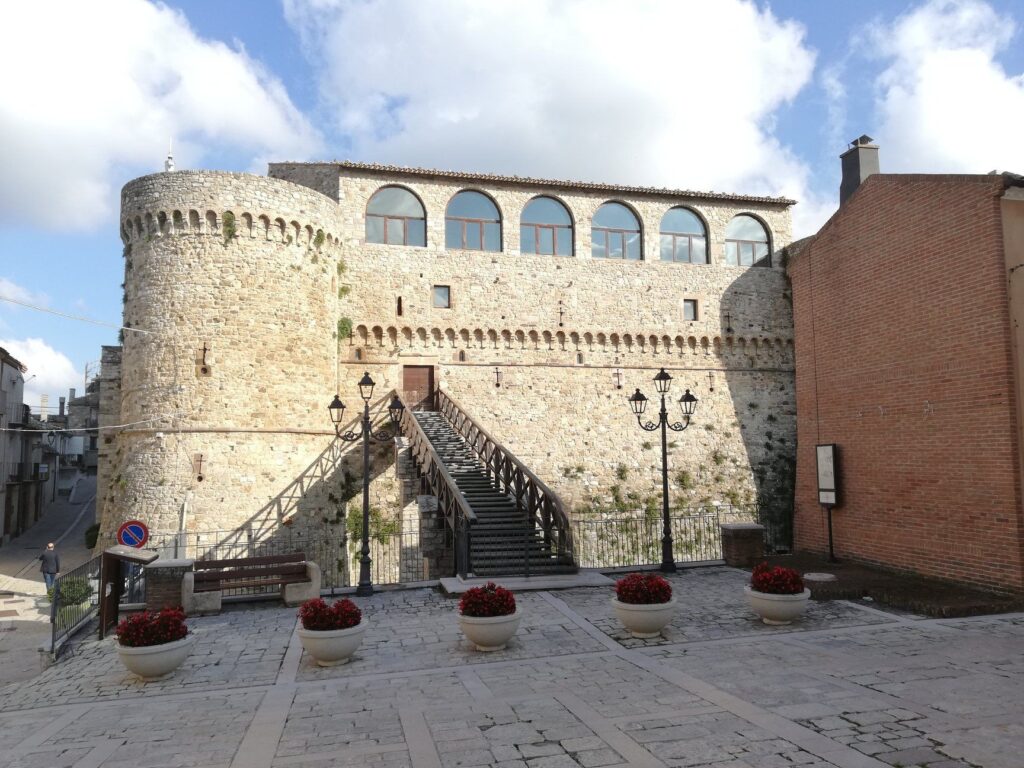
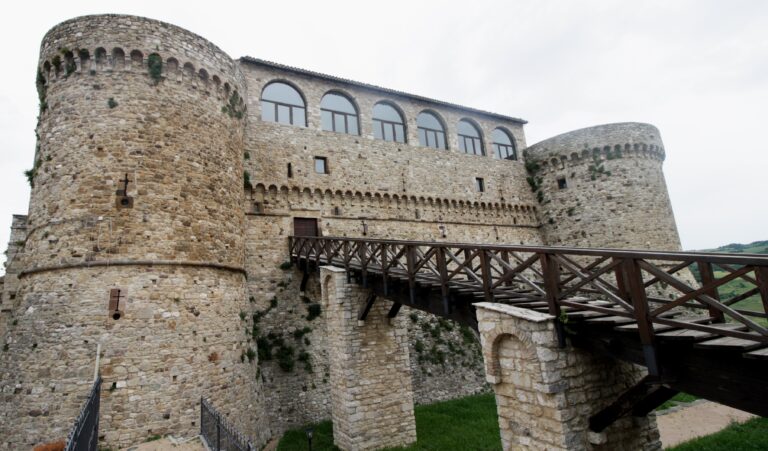
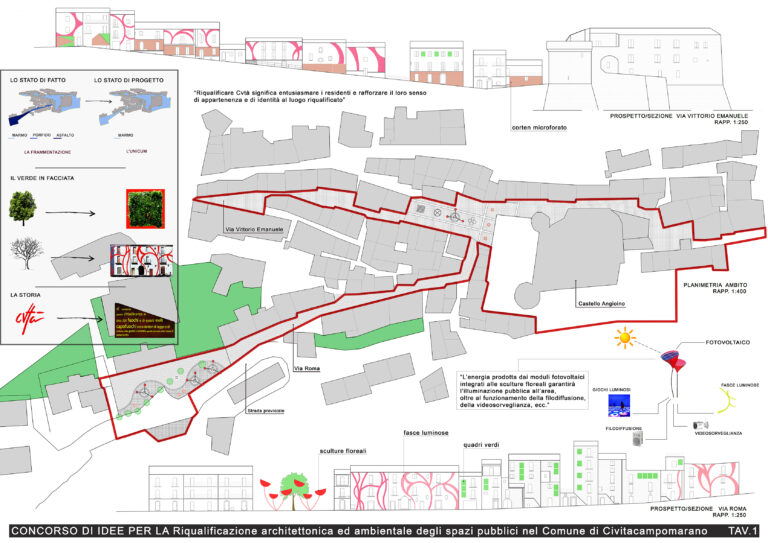
This harmonious reordering will give the citizen a renewed
living space, usable safely by all age groups and equipped
with a functional system of greenery and furnishings, with the enhancement of lighting design characteristic elements on the plane’s architectural and cultural heritage. The realization of
the UNICUM: Walking through the areas subject of
competition, there is an apparent fragmentation of the
pavement: the square in front of the Angioino Castle is paved
with limestone basolato, laid to run, while the No.2 arteries
that flow into it are covered respectively, with limestone
basolato (Via Vittorio Emanuele) with the re-proposition of
the drawing of the square, while Via Roma, starting from the
square in front of the Castle is paved on the first stretch with
basolato of limestone, then with cubes of porfido and finally
with tarmac. This fragmentation confers a character of
disorder and marginality in Via Roma, even though they have
properties with characteristic facades consisting of full bricks,
stone, and tuff on the same street. The ININSERIMENTO OF
GREEN, or rather a stylized and artistic technical version of
plantings, decorating the facades of the houses of the front
road Via Vittorio Emanuele and Via Roma, up to the Piazza
del Castello, combining art, light, and security.” The streets
do not allow the insertion of extensive plantings. That is why
the choice of the ‘GREEN QUADRI,’ which, together with
the metallic floral elements, will ensure the decoration of the
facades. The prospects of the Angioino Castle will be
characterized by the following: • RGB LED lighting with a timed color change (white,
amber, celestial, blue, magenta, green, red); • projected on the facades with projectors.
The property statements will be marked: • FROM representations made with aluminum panels
micro-drilled to ensure lighting in the evening hours,
which will replace “the usual” illuminating bodies on
the wall. The light emanating from the “light bands”
will be RGB LED (with color change). The LED was
chosen for both the guaranteed energy savings and the
maintenance factor of 0.8 (the maintenance factor is the
light lamp flow factor, the lamp fade factor, and the
maintenance factor for the device); • From “green squares” (small green walls) consisting of
a dried and stabilized natural lichen from Scandinavia
that does not require maintenance or water.
It is a flexible carpet of colored liner for stabilized vertical
gardens that do not require maintenance. “Renovating the
Castle Square means, first of all, enthusing the residents and
strengthening their sense of belonging and identity to the
redeveloped place.” Therefore, we thought to tell the story of
Civitacampomarano along Via Roma and Via V. Emanuele,
up to the Piazza del Castello, also involving Via Marconi and
part Via Vincenzo Cuoco (up to the house of the well-known
Vincenzo Cuoco). Where possible, the facades of the lower
floors will be enhanced with decorative elements with corten
steel, with a rusty-antique effect, on which the story of Cvtà
will be told. The dDs behind them will ensure readability even
in the evening hours. The Corten, its lived appearance, and
the intrinsic characteristics of deformability and durability are
certainly the most responsive material to the architecture of
the place.
THE DISTENSIBILITY
We have provided floral sculptures with adjoining
photovoltaic cells to ensure the economic and environmental
sustainability of furniture, lighting, video surveillance, and
anything else necessary that can characterize and enhance
Civitacampomarano. Each floral sculpture will house a total
of 6 photovoltaic modules. It is therefore planned to install 24
high-efficiency single-crystal photovoltaic modules (No.4
sculptures – 250 Wp) that will achieve a total installed power
of 6 kW. The system is grid-connected, and the type of
connection is single-phase in low voltage. Production: the
annual energy produced will be 8,130 kWh. (The following
table shows the monthly energy produced.) Energy and
economic sustainability: the energy produced by the
proposed photovoltaic system will meet the annual energy
absorption. The payback of the plant is estimated to be about
nine years old. Environmental sustainability:
The proposed photovoltaic system will reduce emissions into
the atmosphere of pollutant-affected substances and those
that contribute to the greenhouse effect, as shown in the
following table.
